Sweet sticky rice with Thai custard, or sangkaya, is a Thai dessert that’s perfect for any occasion. In this recipe, I’ll share the method for making the smoothest egg custard with creamy coconut milk and delicious coconut-infused sticky rice.

Thai dessert recipes are a mix of shapes, colors, and flavors, and there are so many kinds. Especially Thai custard comes in so many variations, like taro, pandan, pumpkin, and Thai coconut custard.
Today, we’re making the egg custard version of sangkaya. It’s authentic and super yummy!
What is sangkaya Thai dessert
Sangakaya is a traditional Thai dessert. It’s a velvety smooth custard made with a base of coconut milk and egg.
In Thailand, we call this specific dessert khao niao sangkaya kai. Khao niao refers to Thai sticky rice, and sangakaya kai is Thai for egg custard.
Thai custard with sticky rice
Making this Thai custard with egg and sticky rice is pretty easy. Just follow the easy step-by-step images and you’ll do great!
The first step in making this dessert is making the sticky rice. I chose Thai purple sticky rice, also known as black sticky rice, for its unique nutty taste and chewy texture. You can also use it in my recipe for Thai mango sticky rice.
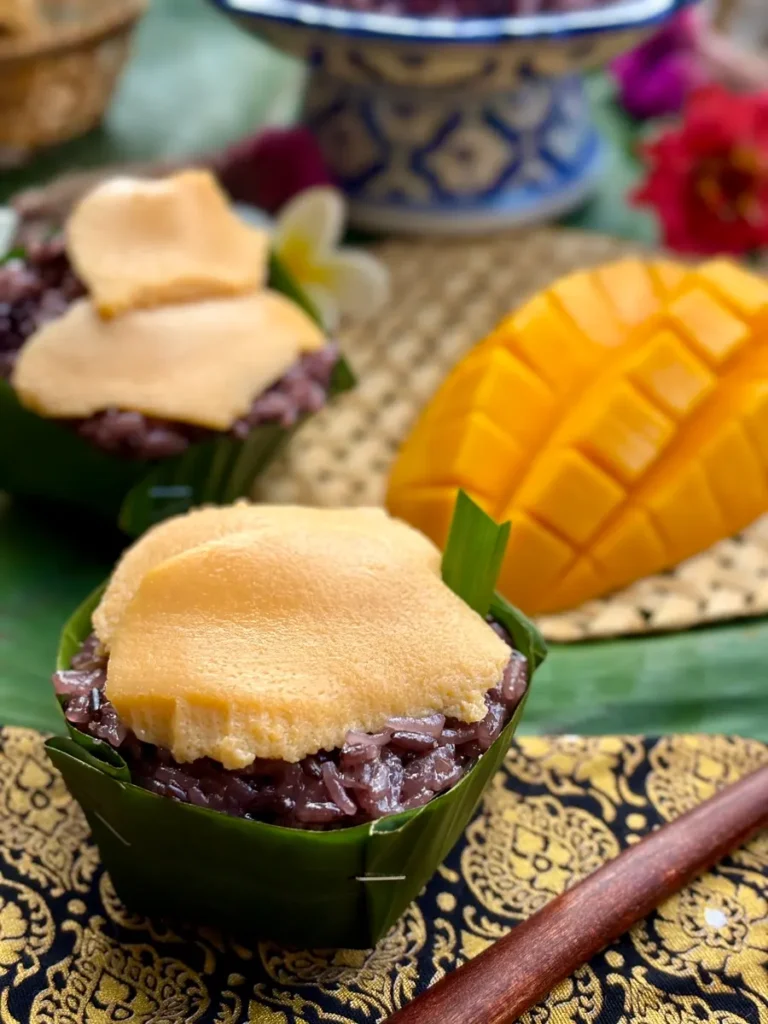
While the rice is steaming, we can make a seasoned coconut milk mix. Once the rice is steamed, we’ll let it soak in that coconut milk, making it super creamy and irresistible.
The last step is making sangkaya, or Thai egg custard. We’ll mix coconut milk, egg, sugar, salt, and pandan leaves, and then steam it until it’s silky smooth.
And that’s it. Even though it’s a traditional dessert, I’d happily eat it for breakfast any day. It’s just too good to wait for dessert time!
Ingredients
Ingredients can be sourced at Asian grocery stores and Asian markets.
The exact measurements are in the recipe card at the end of this post.

Egg custard
- Chicken eggs – A combination of chicken and duck eggs ensures a creamy, rich texture, and a dense consistency.
- Duck eggs
- Pandan leaves – Pandan leaves are often used in Thai desserts for their lovely aroma.
- Coconut milk – Coconut milk adds a creaminess and subtle sweetness to the custard, making it smooth and delicious.
- Cane coconut sugar – Adds a caramel-like sweetness that’s distinct from white and brown sugar. Palm sugar can be used as a substitute.
- Salt – Enhances the flavors and balances the sweetness.
Coconut sticky rice
- Black glutinous rice – Mixing black and white glutinous rice turns it into purple rice, which is perfect with this custard dessert.
- White glutinous rice
- Pandan leaves
- Coconut milk – The sticky rice will be soaked in coconut milk.
- White sugar – For sweetening the sticky rice. Feel free to adjust to your taste.
- Salt
How to make Thai egg custard
Coconut sticky rice

Step 1: Soak black and white glutinous rice in water for at least 4 hours or overnight.

Step 2: After soaking, steam the rice for 20 minutes. You can find step-by-step instructions for steaming sticky rice in my recipe for Thai purple sticky rice.

Step 3: Combine coconut milk, sugar, salt, and pandan leaves in a pot over low to medium heat. Stir until the sugar dissolves completely, or three minutes.

Step 4: While the coconut milk mixture is still hot, pour it over the steamed rice in a large bowl. Allow the rice to absorb the coconut milk for 20 minutes, stirring every five minutes to ensure even soaking.
Egg custard

Step 5: In a separate bowl, whisk the eggs. Mix in the coconut sugar, pandan leaves, and salt. Blend by hand until the sugar is fully dissolved. Slowly add the coconut milk, stirring continuously.

Step 6: Strain the egg mixture through a sieve or filter cloth directly into a baking mold or bowl.

Step 7: Allow the strained egg mixture to settle for five minutes, then remove any foam from the surface. Steam the mixture on very low heat for 20 to 30 minutes. Check if the custard is set by inserting a toothpick—if it emerges clean, the custard is done. Let the custard cool slightly before serving. To serve, place a portion of the coconut sticky rice into a bowl and lay a slice of the custard on top. Enjoy!
Kitchenware for making Thai egg custard
- Saucepan for heating the coconut milk mixture
- Steamer to steam the purple sticky rice
- Steaming pot for steaming the custard
- Baking mold or bowl for custard
- Large mixing bowls
- Sieve or filter cloth
Recipe tips and tricks
Steam over low heat: Steam the custard on low heat to prevent it from curdling. A gentle, even heat ensures that your custard sets smoothly without any lumps.
Test for doneness: If it’s your first time making Thai egg custard, you can check if the custard is done by inserting a toothpick into the center. It should come out clean. If not, steam for a few more minutes and test again.
Sticky rice: If you don’t have white and black glutinous rice, you can use only white glutinous rice.
Sticky rice Thai custard serving suggestions
Spoon the sticky rice onto a plate or use a small bowl or cup, then spoon the egg custard over the top. I like serving this with chilled slices of ripe mango during summer.

Leftover sweet sticky rice with Thai custard
Store your leftovers in an airtight container in the fridge for up to 2 days. If needed, you can reheat the sticky rice in the microwave, covered. You can eat the custard cold or warmed.
Frequently asked questions
What does Thai custard taste like?
Thai custard is creamy and sweet, with a rich coconut flavor from the coconut milk. It’s silky smooth and can be made with egg, pandan, vanilla, taro, and many more.
Is this custard recipe gluten-free?
Yes, all ingredients are naturally gluten-free.
Authentic Thai dessert recipes
- Bua loy (rice balls in coconut milk)
- Kanom krok (coconut pancakes)
- Luk chup (mung bean dessert)
- Lod chong (cendol)
- Shaved ice
- Ruam mit
Loved reading this Thai sangkaya or sweet sticky rice with Thai custard recipe? Please make my day by dropping a star rating and/or a comment below! Follow me on Facebook, Instagram, and Pinterest.
Sweet Sticky Rice With Thai Custard (Sangkaya Recipe)
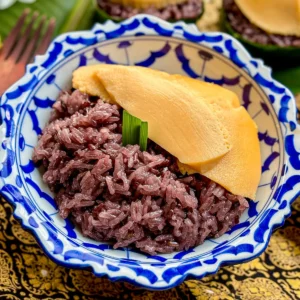
Ingredients
THAI CUSTARD
- 3 chicken eggs
- 3 duck eggs
- 2 pandan leaves
- 1 cup coconut milk
- 1/2 cup cane coconut sugar, or palm sugar
- 1/4 teaspoon salt
COCONUT STICKY RICE
- 1 1/2 cup white glutinous rice
- 1/3 cup black glutinous rice
- 1 1/2 cup coconut milk
- 1/4 cup white sugar
- 1/2 teaspoon salt
- 2 pandan leaves
Instructions
- Soak black and white glutinous rice in water for at least 4 hours or overnight.
- After soaking, steam the rice for 20 minutes. You can find step-by-step instructions for steaming sticky rice in my Thai sticky rice recipe.
- Combine coconut milk, sugar, salt, and pandan leaves in a pot over low to medium heat. Stir until the sugar dissolves completely, or three minutes.
- While the coconut milk mixture is still hot, pour it over the steamed rice in a large bowl. Allow the rice to absorb the coconut milk for 20 minutes, stirring every five minutes to ensure even soaking.
- In a separate bowl, whisk the eggs. Mix in the coconut sugar, pandan leaves, and a salt. Blend by hand until the sugar is fully dissolved. Slowly add the coconut milk, stirring continuously.
- Strain the egg mixture through a sieve or filter cloth directly into a baking mold or bowl.
- Allow the strained egg mixture to settle for five minutes, then remove any foam from the surface. Steam the mixture on very low heat for 20 to 30 minutes. Check if the custard is set by inserting a toothpick—if it emerges clean, the custard is done.
- Let the custard cool slightly before serving. To serve, place a portion of the coconut sticky rice into a bowl and lay a slice of the custard on top. Enjoy!
Notes
- Use the nutrition card in this recipe as a guideline.



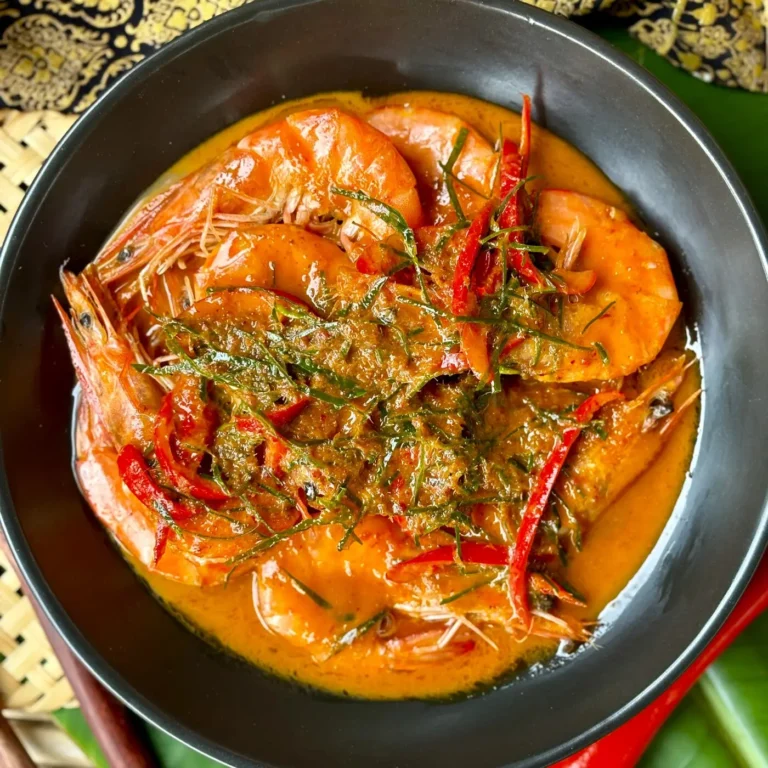
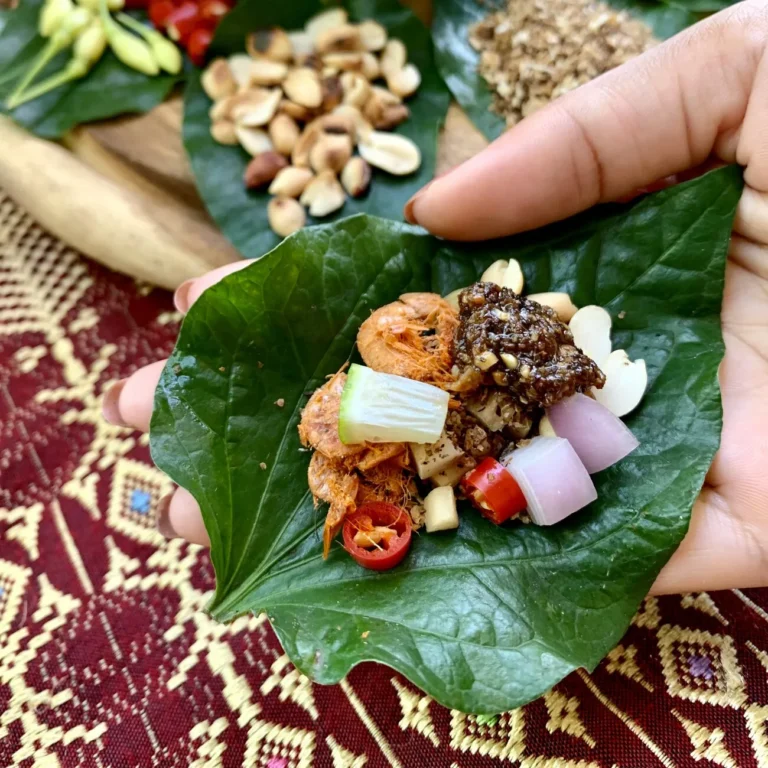

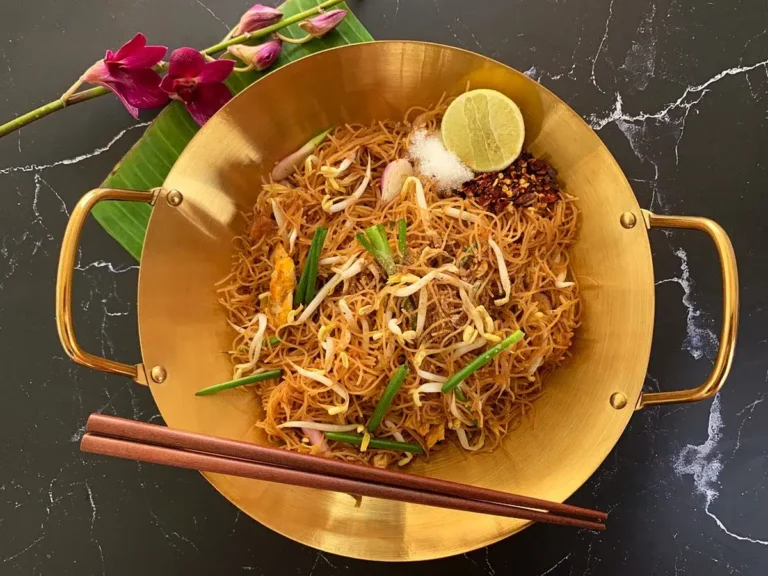
Yummy yummy and more yummy 🫶🏻😘🥳
Thank you!